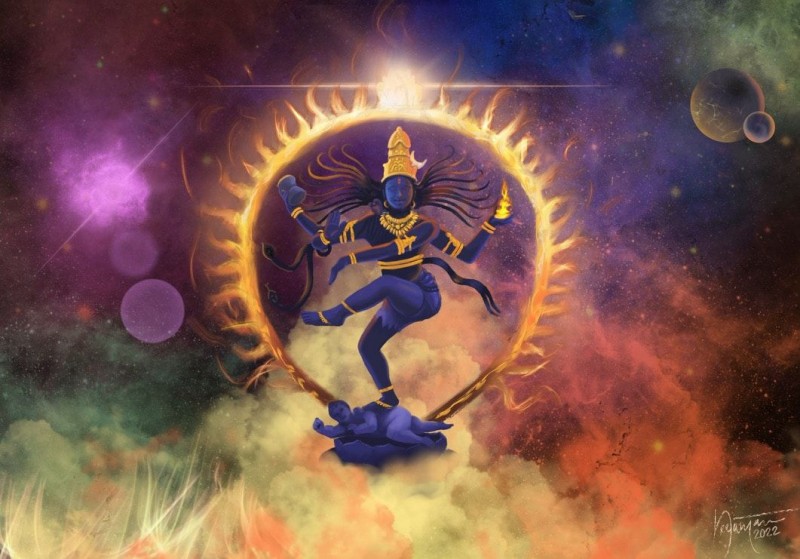
In Hindu mythology, Lord Shiva is one of the most significant and revered deities. He holds a vital place in the Holy Trinity of Hinduism, alongside Brahma, the Creator, and Vishnu, the Preserver. Shiva is known as "The Destroyer" but is also associated with transformation, regeneration, and spiritual ascension. This article delves into the multifaceted persona of Lord Shiva, exploring his significance, legends, and symbolism.
1. The Origins of Shiva
According to Hindu scriptures, Lord Shiva's origin is steeped in mystery. He is often described as eternal and formless, existing before time itself. Various myths narrate different accounts of his creation, and his association with Mount Kailash is widely known.
2. The Iconography of Shiva
Shiva is commonly depicted with blue skin, signifying his transcendence beyond worldly attachment. He wears a crescent moon on his head and is adorned with serpents, symbolizing his control over fear and death. The third eye on his forehead represents his wisdom and the power of destruction.
3. The Nataraja - Lord of Dance
One of the most captivating representations of Shiva is that of Nataraja, the Lord of Dance. This cosmic dance symbolizes the eternal cycle of creation, preservation, and destruction. It signifies the rhythmic balance of the universe and the continuous flow of energy.
4. Shiva's Consort - Goddess Parvati
Shiva is often depicted alongside his consort, Parvati, who embodies feminine power and energy. Their union represents the harmony of opposites, emphasizing the importance of balance in life and the universe.
5. The Third Eye and Destruction
Shiva's third eye is said to release a powerful beam of light capable of destroying anything it gazes upon. This act of destruction is not malevolent but serves the purpose of eliminating evil and ignorance, paving the way for transformation and enlightenment.
6. Shiva's Role in the Cycle of Life
As the Destroyer, Shiva plays a crucial role in the cycle of life. Death is viewed not as an end but as a necessary step towards rebirth and renewal. Shiva's transformative powers facilitate the continuous evolution of the universe.
7. Shiva's Connection to Yoga and Meditation
Shiva is considered the Adiyogi, the first yogi, and the embodiment of meditation and spiritual awakening. He is often depicted in deep meditation on the snowy peaks of the Himalayas, inspiring seekers to embark on their spiritual journeys.
8. Legends of Shiva
The rich tapestry of Hindu mythology is interwoven with fascinating legends of Lord Shiva. From his cosmic battles with demons to his benevolent acts of compassion, each story portrays different aspects of his personality.
9. Festivals in Honor of Shiva
Across the Indian subcontinent, numerous festivals celebrate the glory of Shiva. Maha Shivaratri, the Night of Lord Shiva, is one of the most revered festivals when devotees offer prayers and perform rituals to seek his blessings.
10. Symbolism of Shiva's Trishul (Trident)
The trishul, a three-pronged weapon held by Shiva, represents the three fundamental aspects of existence - creation, preservation, and destruction. It also symbolizes the annihilation of ego, desires, and the illusionary world.
11. Shiva in Modern Culture
Even in contemporary times, the symbolism and significance of Lord Shiva continue to inspire people. Many artists, writers, and musicians draw inspiration from his persona, incorporating his themes into various forms of art and literature.
12. The Eternal Presence of Shiva
Unlike other deities, Shiva's influence extends beyond religious boundaries. His portrayal as a mystical, untamed being transcends cultural differences, resonating with people seeking spiritual growth and self-realization.
13. Embracing Change and Transformation
One of the profound lessons from Shiva's mythology is the acceptance of change. As the Lord of Transformation, he teaches us to embrace life's impermanence, letting go of attachments and welcoming new beginnings.
14. Shiva and Environmental Conservation
Shiva's abode, Mount Kailash, is considered sacred, and its preservation highlights the deity's connection to environmental conservation. Many followers of Shiva advocate for sustainable practices and respect for nature. Lord Shiva, the Destroyer and Transformer, represents the cosmic dance of existence. Through destruction, he paves the way for new creations, symbolizing the cycle of life. His teachings encourage spiritual seekers to embrace change and find inner harmony.
The Mystery of Brahma's Limited Worship
Iraq condemns the most recent Copenhagen Qur'an burning
Intrigue and Devotion: Understanding the Secretive Gods of Hindu Faith